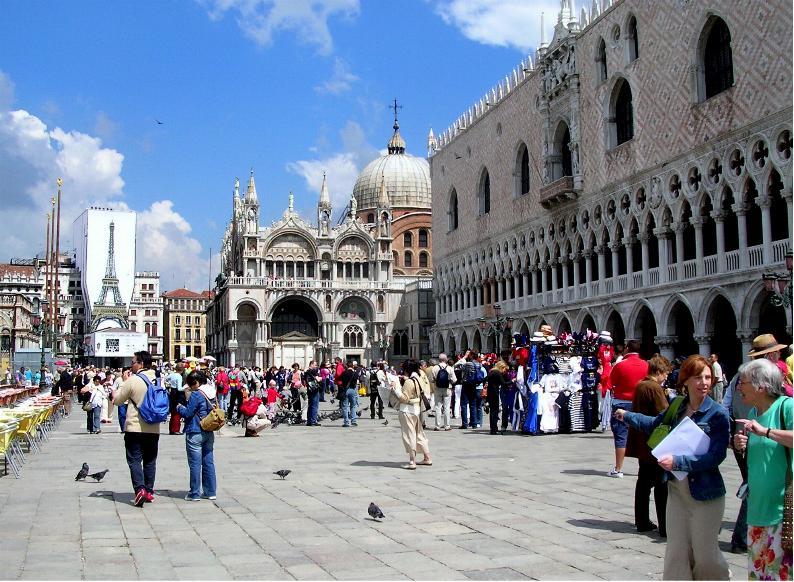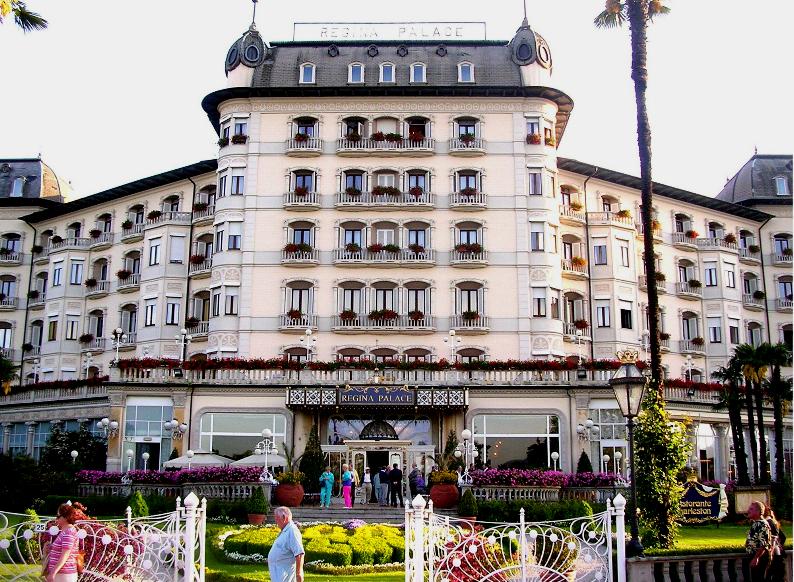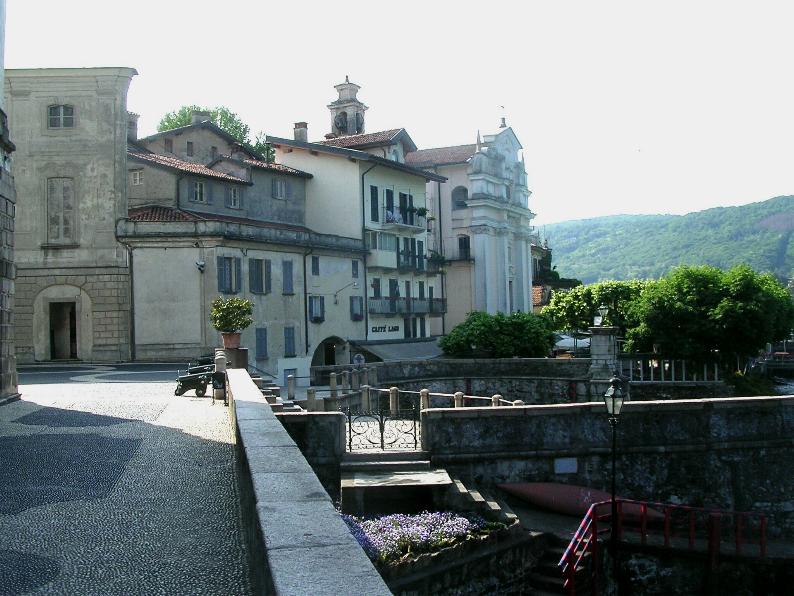Eastern Mediterranean Cruise - May 2005
MS Rotterdam - Holland-America Lines

9 May 2005 - Depart Venice, Italy
Sunset at sea south of Venice
10 May 2005 - Dubrovnik, Croatia
Dubovnik is an ancient city, formerly known as Ragusa, situated on the southern tip of Croatia. It was probably founded in the seventh century AD. It originally was part of the Byzantine Empire but later came under the control of Venice. It existed as a free state from the mid-1300s until after the Napoleonic wars when it was annexed by Austria-Hungary. It later bacame a republic within the Yugoslav Federation. Croatia declared ts independence in 1991 and Dubrovnik was attacked by Serbian forces who occupied the territory around Dubrovnik and bombarded the city for eight months.
Pile Gate, west entrance to Old City Dubrovnik
Fort Lovrijnec
Old City Dubrovnik from the city walls
Phil on city walls near the Old Harbor
12 May 2005 -Santorini, Cyclades Islands, Greece
Santorini was inhabited as early as 3500BC. Akrotiri was a Minoan city on the southern coast of the island that had a very advanced civilization (recent speculation is that it might be the lost city of Atlantis that Plato wrote about). The island was volcanic and it erupted in the 16th century BC, blowing the island apart. The eruption caused a tremendous tidal wave which swept other islands including Crete. The island was again settled by Phoenicians around 1300 BC. The islands were later under Byzantine control, then Venetian. The Ottomans took control in the late 16th Century AD. The islands became part of Greece after the Greek Revolt in 1821. Today three islands are remnants of the original one island, Thira, Therasia, and Aspronisi. Thira is the largest island and is the one we visited.
Fira Town
Phil at Catholic Church in Fira
Excavations at Akrotiri (destroyed by volcano in the 16th Century BC)
13 May 2005 - Kusadasi, Turkey
Kusadasi is a seaport about 150 km. south of Izmir (ancient Smyrna). It is the gateway to the ancient city of Ephesus.
According to the old legends, Ephesus was founded by the female warriors known as Amazons. Ephesus was inhabited from the end of the Bronze Age. Again from legends, the city was founded for the second time by Androculas, the son of Codrus, king of Athens. Under the rule of the Lydian kings, Ephesus became one of the wealthiest cities in the Mediterranean world. The defeat of Lydian King Croesus by the Persian king Cyrus brought the city under Persian control. Alexander the Great broke the Persian yoke in 334 BC. In 129 BC, Romans took control of the area. At this time, Ephesus had a population of 200,000. In the first century BC, heavy taxation imposed by the Romans led to a revolt. In 88 BC, the Latin-speaking inhabitants were massacred leading to the the city being stormed and sacked by a Roman city under Sulla. The buildings we saw were constructed during the reign of Augustus. The city was severely damaged by an earthquake in 17 AD.
St. Mark preached in Ephesus in 55 and 56 AD. St. John the Evangelist moved to Ephesus around 60 AD and died around 100 AD. He is buried in Selšuk, near Ephesus. His tomb was in a huge basilica that was built by Emperor Justinian that was destroyed. Only the ruins and the tomb remain. Legend has it that the Blessed Virgin Mary moved here under John's care around 60 AD. John built a house for her on Mount Bulbul near Ephesus. Mary lived here until her assumption into heaven around 64 AD.
Celsus Library and Mitharades Gate, Ephesus
Marilyn and Phil at the Great Theater where St. Paul preached in Ephesus
Ruins of Church of St. John where St. John the Evangelist is entombed near Ephesus with our guide, Ceylan Dedeoglu
Marilyn and Phil and Helen and John Ramsaur at the home of the Virgin Mary built by St. John near Ephesus
14 May 2005 - Rhodes, Dodecanese Islands, Greece
Rhodes was settled by the Mycenaneans about 1500 BC. The Persians conquered and occupied most of the island in 491 BC. After the naval Battle of Salamis and the defeat of the Persians, the island became part of the Delian League in 480 BC. Rhodes came under Macedonian domination under Alexander the Great. After a long siege, Rhodes regained her independence in 305 BC. One of the seven wonders of the ancient world, the Colossus of Rhodes, was erected at the harbor entrance in 293 AD. The Colossus was destroyed by an earthquake in 227 BC. In 70 AD, Romans took control of Rhodes and held her until the 3nd century AD after which the Byzantines controlled Rhodes. Later it was occupied by the Persian, the Turks, and the Saracens. Later the Genoese and the Venetians took control. The Knights of St. John fortified the island but were finally ousted by the Ottomans in 1523 AD after a long siege. The Italians took over in 1912 and held the island until 1943. The British controlled the island after World War II until 1948,when Rhodes was reunited with Greece.
St. Nicholas Fortress at entrance to Rhodes - near site of the Colussus of Rhodes, one on the Seven Wonders of the Ancient World
View of Rhodes from the Palace of the Grand Masters
Marilyn and friend at the Palace of the Grand Masters
16 May 2005 - Pireaus/Athens, Greece
Athens was one of the small city-states in ancient Greece. Solon established a democracy where all classes except slaves were invested with the vote. Starting in 490 BC, the Persians invaded Greece two times, defeated the first time on land and the second time on the sea. Pericles in the 5th century BC built the Parthenon, the Propylea, the Long Walls of Piraeus, and many of the Temples in Athens. Athens was defeated by Sparta in 404 BC after a 27 year war. Thirty years later, Macedonia unified Greece. In 146 BC, the Romans took control of Greece. After the Empire was split, Greece was under Byzantine control. After the fall of Byzantium, Athens came under Turk control until 1821 when the Greeks revolted. Greek independence was finally achieved in 1829.
The Parthenon served as a Athenian temple, Christian church, a Moslem mosque, and finally a Turkish gunpowder magazine. Venetian gunners hit the structure in 1687 blowing up the powder and destroying the Parthenon.
Marilyn at East Front of the Parthenon, Acropolis, Athens
Erecthion, Acropolis, Athens
Temple of Olympian Zeus, Athens
16 May 2005 -Katakolon/Olympia, Peloponnesian Peninsula, Greece
The original Olympics began as a small regional festival in the 11th century, which was dedicated to the god Zeus. But the origins of the town itself are Mycenaean. The first Olympic games were held in 776 BC and reached their height of popularity in 576 BC. The festival was open to only Greek born men but later Romans were allowed to compete most likely because they were running the country by then. Even though the Greek city-states were often warring, a truce was declared during the games, initially for three months, later for six months. Slaves and women were not even allowed to be spectators and women caught sneaking in were thrown off a cliff. The events included foot races, wrestling, discus, javelin, long-jump, horse and chariot racing, and a type of boxing called pancratium. The games were banned in 426 by the emperor Theodosius II because they were pagan, and the temples were destroyed.
Temple of Zeus, Olympia - Site of the Statue of Zeus, one of the seven wonders of the ancient world
Phil at Olympia, the site of the Pan-Hellenic Games in ancient times
Hermes of Praxiteles, Olympia, sculpted around 340 BC found in the Temple of Hera
17 May 2005 - Valletta, Malta
The first settlers arrived on Maltaaround 5000 BC from Sicily. There is evidence that the Phoenicians were on the island of Malta around 800 BC. Carthaginians colonized the Malta in the eighth and seventh centuries BC. The islanders lived in relative peace until the Punic Wars between Carthage and Rome in the third century BC. During the first Punic War (262-242 B.C.E.), Malta was a Carthaginian naval base, but by 218 BC, the Maltese islands were a Roman colony. St. Paul was shipwrecked on the island in 60 BC on his way to Rome. According to tradition, he converted the Roman governor, Publius, who later became the first bishop of Malta. With the decline of the Roman Empire in the west, Malta, like other parts of the Roman empire in the west, became part of the new Germanic kingdoms. Malta, with Sicily, was ruled by the Vandals and the Visigoths in the 5th century. Around 535 AD, Malta came under Byzantine control. Moslem raids led to them capturing Malta around 870 AD.
During the eleventh century, Christians and Muslims battled throughout the Mediterranean. Malta also became a battlefield. Muslim pirates, using Malta as a base, raided southern Europe. Roger I, king of Sicily, retaliated and gained control of Malta in 1090. The island came under Spanish control in 1282 AD. The growing threat of the Ottoman Turks to western Europe caused Charles V, Holy Roman Emperor and King of Spain, to give Malta to the Knights of the Order of St. John of Jerusalem in 1530, for a yearly rent of a Maltese falcon. After the loss of Rhodes in 1522, the Knights of the Order of St. John were left without a home. In 1530, the Order accepted Charles V's offer to create their new base on Malta. The Knights initially did not think Malta was a good location, citing its rocky landscape and lack of fresh water. Malta was besieged by the Turks but were unable to defeat the Knights' defenses, thereby saving Western Europe from Moslem rule. Napoleon seized Malta in 1798 but mistreatment of the citizens led to a revolt. The French were defeated thanks to British intervention in 1800. Malta remained under the British until 1974 when it became a republic.

Valletta street scene

Siege Bell Monument, Valletta
Tomb of Knight Gregory Spinola 1682, Co-Cathedral of St. John, Valletta
Phil with Italian destroyer D-561, MM Francesco Mimbelli, at Valletta
19 May 2005 - Venice, Italy
According to tradition, Venice was founded in 421 AD on April 25th, St. Mark's Day, who is the patron saint of Venice. The Doges' (the Doge was the ruler) government was established in 726. The Venetians were famed as merchants and they established control over many areas in the Eastern Mediterranean, The journey of the Venetian merchant Marco Polo from Venice to China is one of the most fascinating true stories of Middle Ages (1271-95). Repubblica Serenissima di Venezia, the Venetian Republic, was defeated by Napoleon in 1797 and after the defeat of Napoleon, it became a part of the Hapsburg Austrian Empire. Venice joined the Kingdom on Italy in 1865.
Gondolas in Venice canal

St. Mark's Square, Venice
Doges' Palace, Venice
19-22 May 2005 - Stresa, Piemonte, Italy

The Regina Palace, our hotel in Stresa
Stresa night street scene
Marilyn with Isola Madre in Lago Maggiore in the background

Borromeo Palace, Isola Bella
Borromeo Palace, Isola Bella
Isola San Giulio, Lago Orta

Last dinner in Stresa with Peggy and Ron Bastien and John and Helen Ramsaur
RETURN to Home